Every now and then, we owe ourselves an easy meal. Something that doesn’t exude excess creative energy, require nit-picky prep, or dirty much in the way of dishes.
Assumably – unless you’re a chef or food blogger – that’s what most of your meals probably look like, but for me, I assume that you guys always want the most unique, flavorful, indulgent lectin-limited meals their is, which is what I drive to give you!
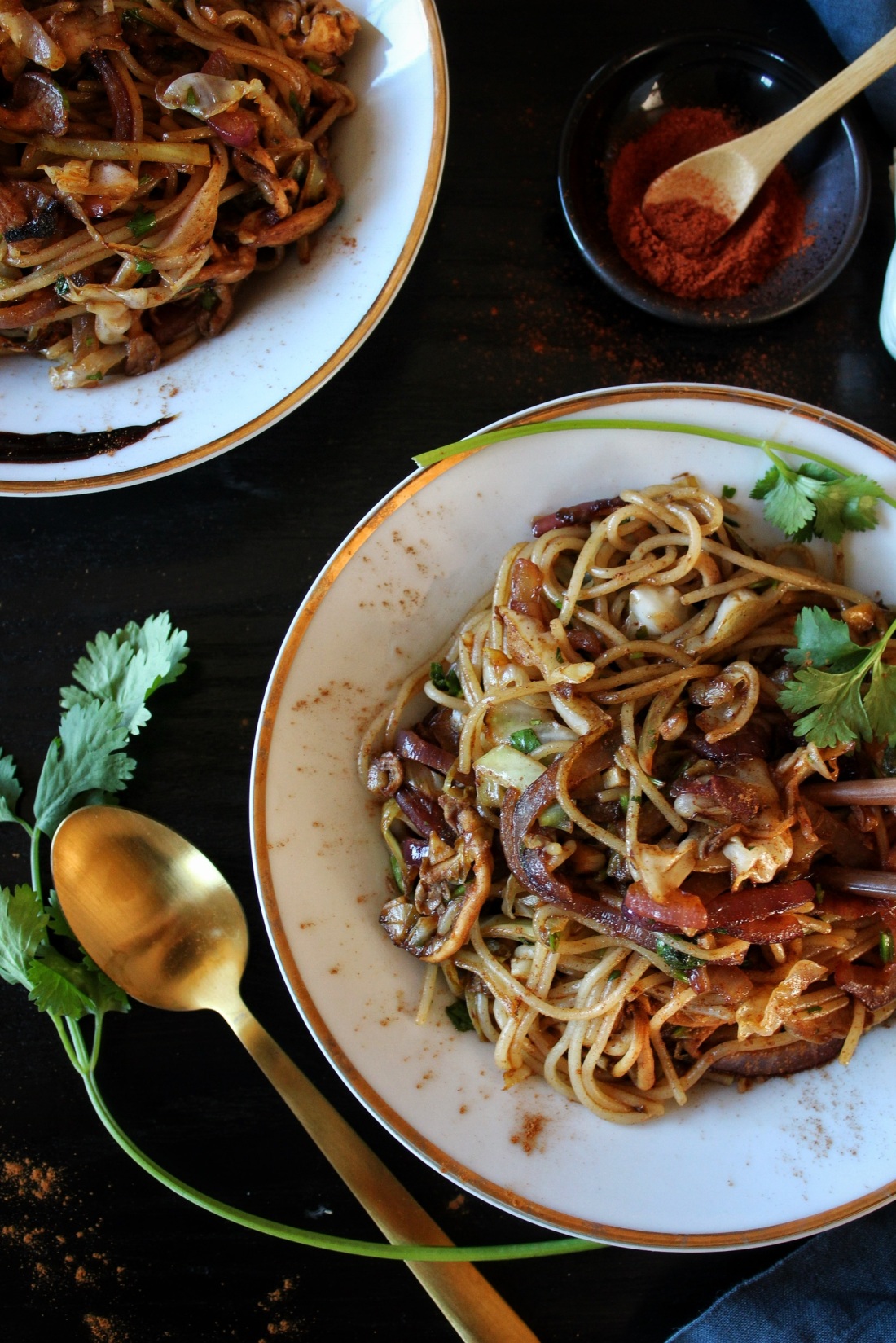
But alas, among a big move and scattered thought patterns, I’ve only been able to focus on simple, filling dishes that’ll get me through the day, which tends to mean fresh vegetables and rice/rice products, because it’s cheap, lectin-free, and a breeze to make. This dish is no exception, as it’s made out of white rice spaghetti noodles, which is a new find of mine!
This white rice pasta is made out of white rice flour and water – das it. Their texture is far more akin to wheat pasta than miracle or veggie noodles are. And they cook up similarly to wheat noodles as well; to cook white rice pasta, bring a large pot of salted water to a boil, add in pasta, and cook for 16 minutes stirring occasionally, and the result is perfectly al dente.
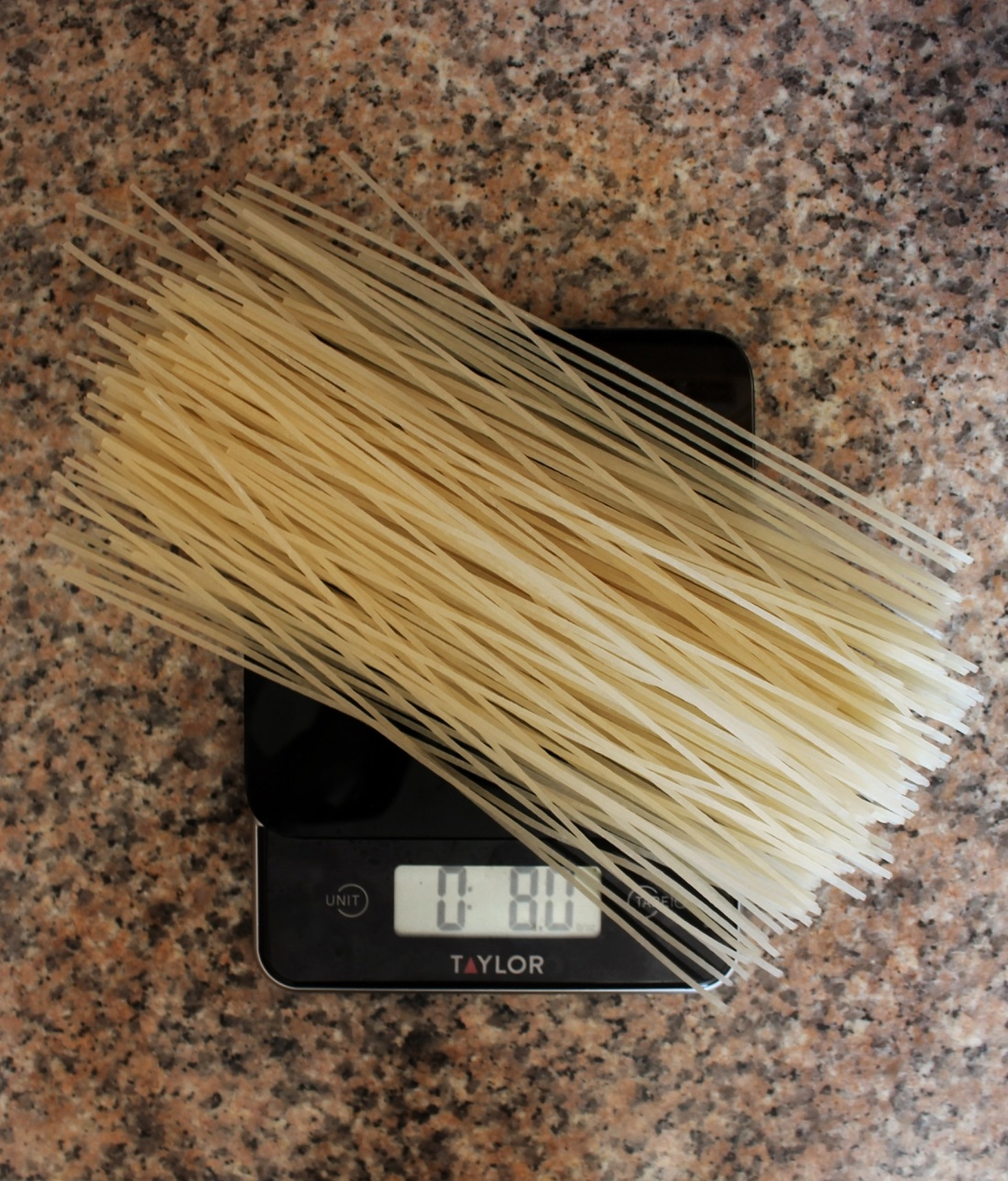
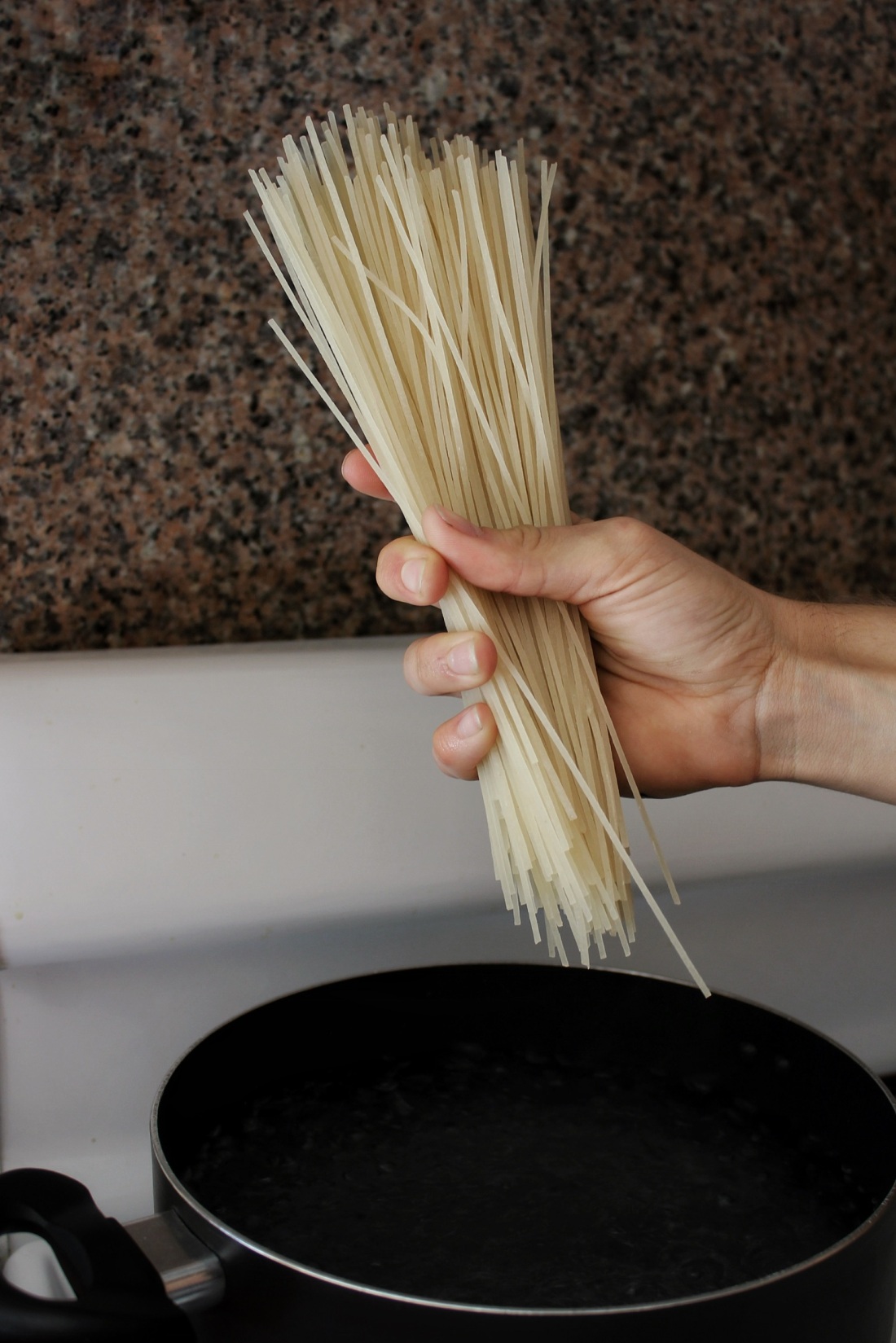
I’m aware that white rice isn’t recommended in the Plant Paradox Program – the diet which this blog tends to stick by – but, the two grains that are recommended in the program are millet & sorghum, which are both naturally hull-free, meaning lectin-free as well. While rice does naturally contain a hull (brown rice) and therefore lectins, when the hull is removed, the grain that’s left (white rice) is completely lectin-free.
The way I look at it, if white rice has been the staple food of billions of healthy people for around 10,000 years, then including smalls amounts of it into my diet isn’t going to hurt me. Plus, if you’ve read our post on White vs Brown Rice, then you’ll know that the simple carbohydrates in white rice can be converted into complex carb just by spending a couple hours in the fridge. So – if you’re diabetic or sensitive to insulin spikes – park your cooked pasta in the fridge for eight hours, then re-heat when it comes time to assemble the rest of this dish. If you have doubts about the effectiveness of this process, then I highly encourage you check out our White vs Brown Rice post, as it contains research including peer reviewed studies, statistics, and historical food facts.
If you’re unable to find “Spaghetti Style White Rice Pasta” by Tinkyada in stores, use an equal amount of vermicelli noodles, just note that vermicelli should be cooked for less time than spaghetti, so be sure to take a quick-glance at the instructions listed on the back of the package to locate the appropriate cook time.
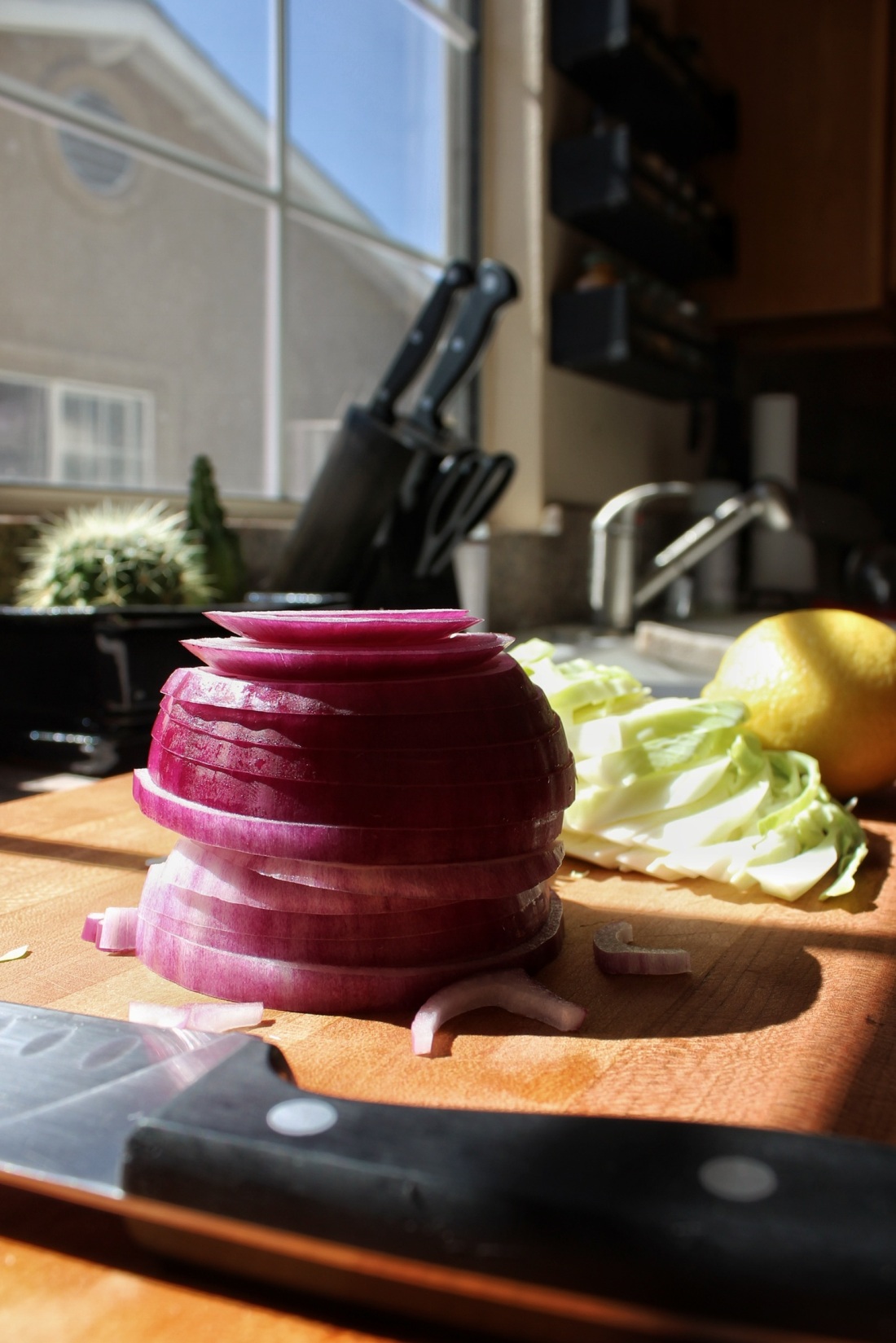
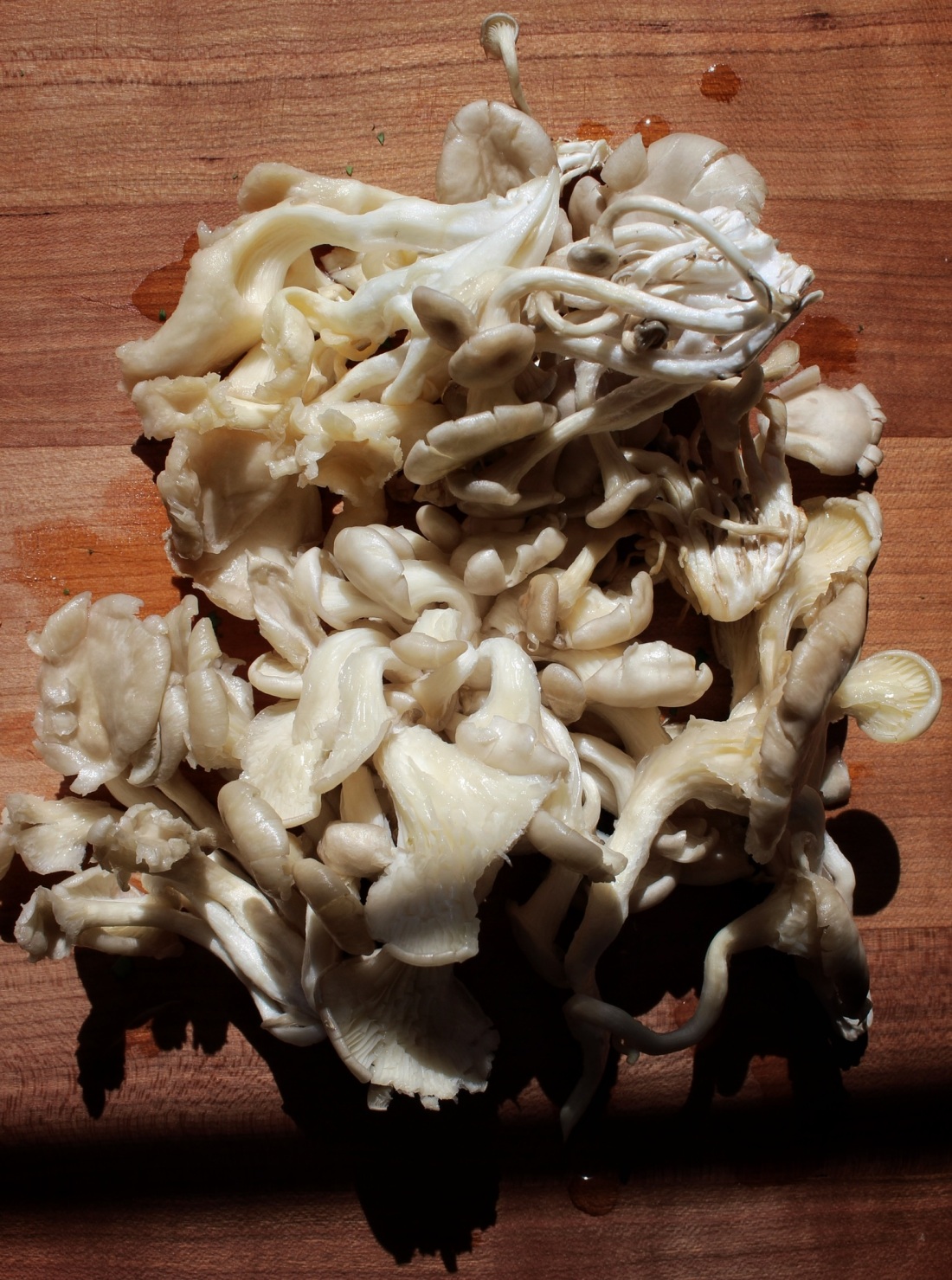
One of my favorite things about pasta is that it serves as a functional trash can for whatever’s in the fridge; you can throw whatever vegetables and seasonings you have into a pasta dish and achieve tasty results. Got an onion, some garlic, cilantro, cabbage, and mushrooms layin’ around? Great, toss them into pasta and call it a night!
But you could also toss in any variation of these veggies with great success:
- Broccoli
- Cauliflower
- Spinach
- Shallots
- Chives
- Mint
- Basil
Basically, if you got it, throw it in there.
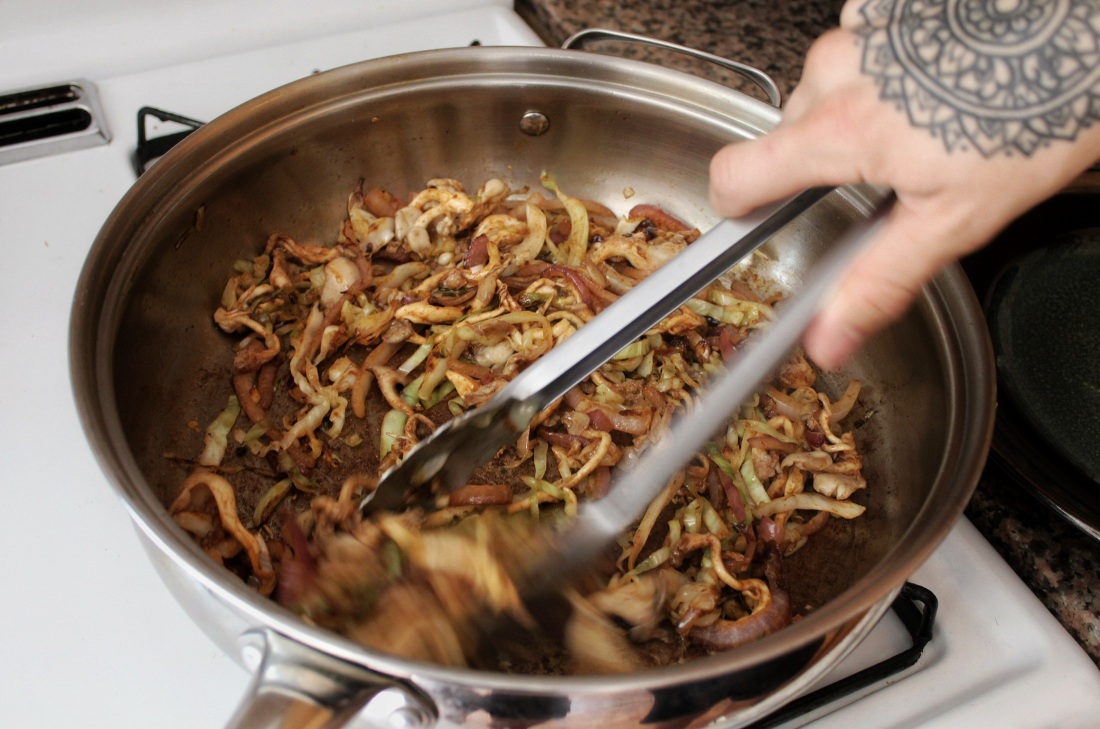
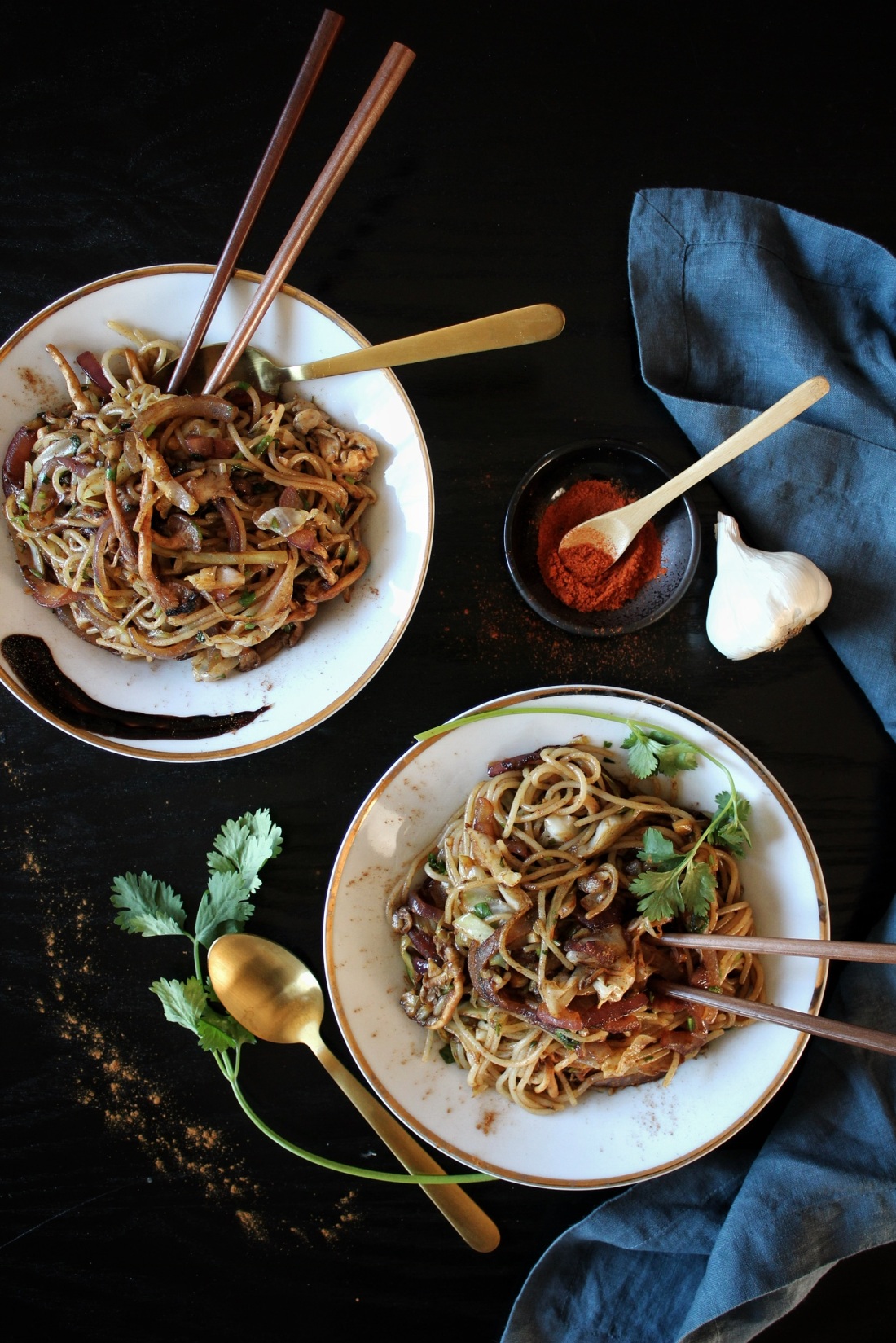
Being that I’m continuously inspired by Thai food, I seasoned this dish with a combination of spices and flavorings slightly similar to Pad Thai – cinnamon, cayenne, tamarind paste, tamari sauce, toasted sesame oil, and erythritol (alcohol sugar).
When these seasonings meet in holy matrimony with sautéed vegetables and al dente white rice paste, you have a dish that takes no more than 45 minutes to make and satisfies your tastebuds in search of a refreshing, spicy meal.
If you like what your taste buds are tellin’ ya, leave behind a nice rating, share your thoughts with us in the comments, or show us your creations by tagging @noeggsorham on Instagram.
All the best,
Ryan & Kim
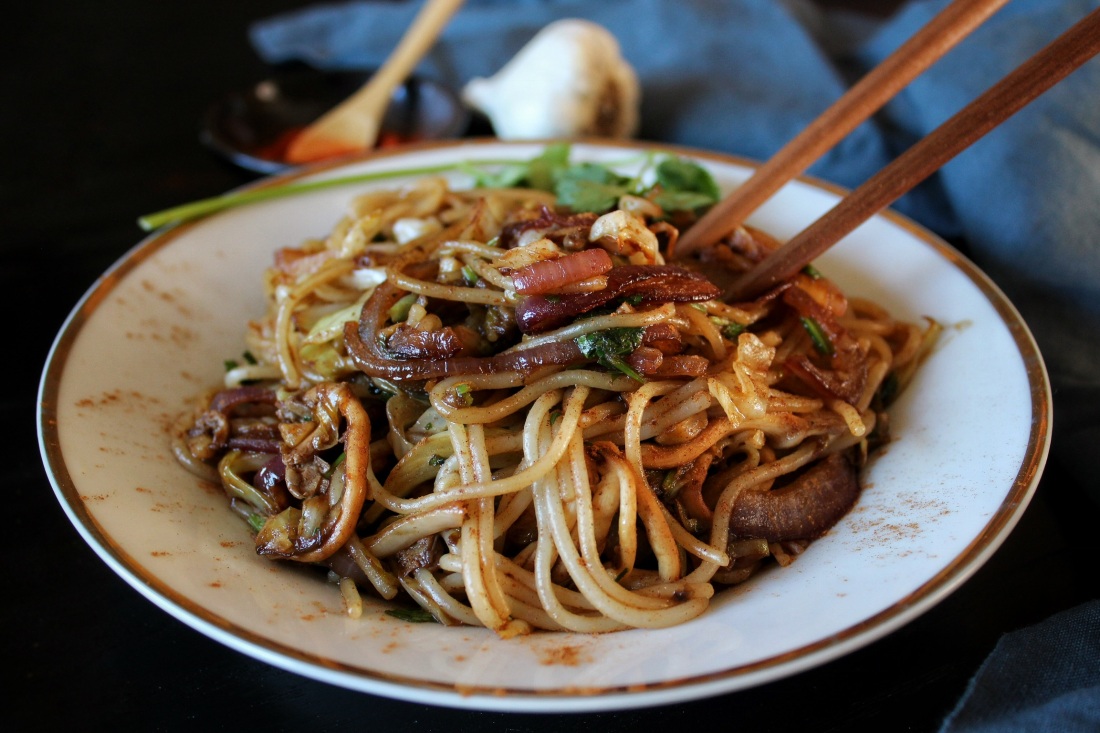
Spicy Tamarind Pasta
Al dente white rice pasta, tossed with sautéed vegetables, cinnamon, cayenne pepper, and sweet & tangy tamarind sauce. Perfect for lazy nights in or a healthy meal on the go.
Ingredients
Pasta
- 8 oz white rice spaghetti*
- 4-6 quarts of water
- 1 tbsp salt
Vegetables
- 1/4 head of cabbage, thinly shredded
- 1/2 red onion, thinly sliced (about 1/4 in thick)
- 4 oz oyster mushrooms or ‘shroom of choice, cut into into bite-sized pieces (they’ll shrink when cooked)
- 6 medium garlic cloves, largely chopped (big chunks are welcomed)
- 1/4 c chopped cilantro
- 2 tbsp + 1 tsp coconut or unrefined sesame oil
- Heavy pinch of salt
Seasoning
- 1 tbsp tamari sauce
- 1 tbsp erythritol or xylitol
- 2 tsp tamarind paste
- 1 tsp toasted sesame oil
- 1/2 tsp cinnamon
- 1/2 tsp cayenne
Directions
- Fill a large pot (6-8 quarts) 3/4 full with water. Add a tablespoon of salt and bring to a boil over high heat.
- Once boiling, add pasta and cook for 16 minutes, stirring frequently at first, and then once every two minutes for the rest of the time. Once finished, drain through a colander and rinse with cold water. Keep to the side.
- In a small bowl, whisk together tamari, erythritol, tamarind, and toasted sesame oil. Set aside.
- While paste cooks, heat a large, 12 inch skillet over medium-high heat. Once hot, add in 2 tbsp of coconut or unrefined sesame oil followed by onions, cabbage, and a heavy pinch of salt. Stirring occasionally, cook until onions and cabbage begin to brown around the edges; 5-7 minutes.
- Move cabbage and onions to the side of the pan, then add in extra teaspoon of oil followed by garlic, mushrooms, cinnamon, and cayenne. Once garlic begins to brown, mix with cabbage & onions and cook until mushrooms are tender; 2-3 minutes.
- Add in cooked pasta, cilantro, and tamarind mixture into pan. Stir until just combined – you’ll know when the noodles are tinted brown – and then turn off the heat. Divide among two large bowls or plates and serve while fresh!
- Note: spring loaded tongs are my favorite tool for handling this much pasta.
- Leftovers can be stored in an airtight container in the fridge for up to 3 days. Reheat in a medium non-stick pan over medium-high heat with a touch of coconut or sesame oil, stirring occasionally until hot; about 5 minutes.
*To convert the simple carbs in rice pasta to complex carbs, cook the pasta ahead of time, refrigerate for at least 8 hours, then add in as instructed in step 6 when ready to eat. Read about how this works here.

Is tamarind paste lectin-free friendly? I haven’t been using it because I thought it came from a fruit, so I assumed it wouldn’t be lectin-free.
LikeLike
Hey Sierra!
Most fruits are lectin-free, they’re just simply high in sugar so they’re not recommended on Gundry’s diet. Tamarind is not only low in sugar, but you only need a small amount at a time, so you’re totally fine to use it!
Hope this helps,
Ryan
LikeLike
This is a wonderful post! And y’all have a great blog! Definitely great inspiration for mine!
LikeLiked by 1 person
Wow I have never seen tamarind paste and those kinds of spices go into a pasta dish. You seem to have made it work though. Nice work (:
LikeLiked by 1 person